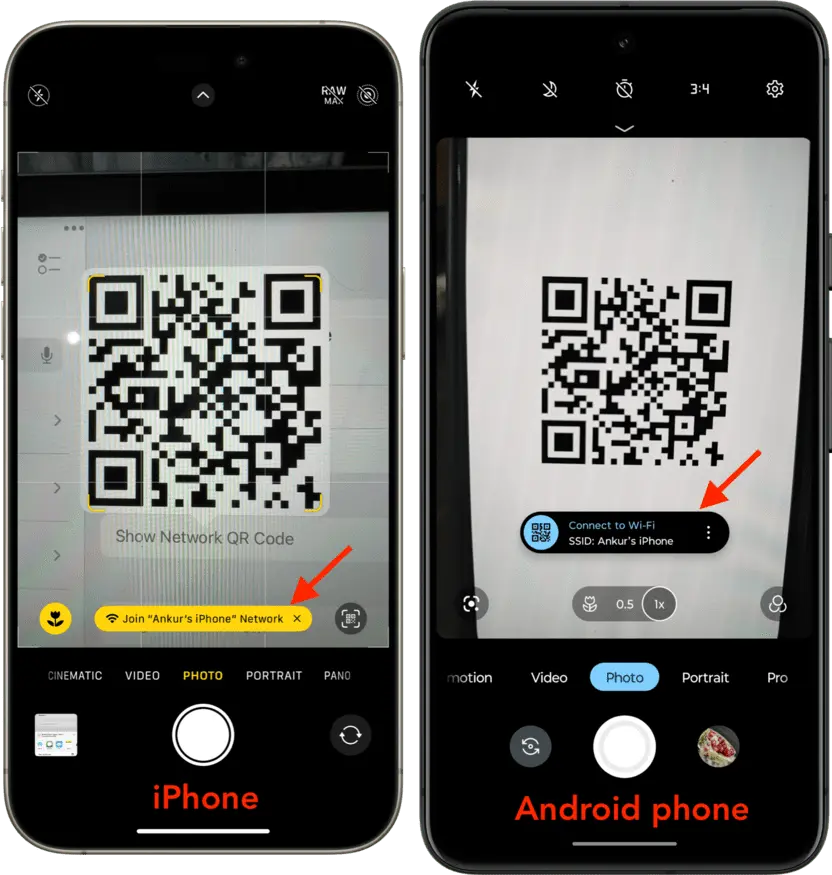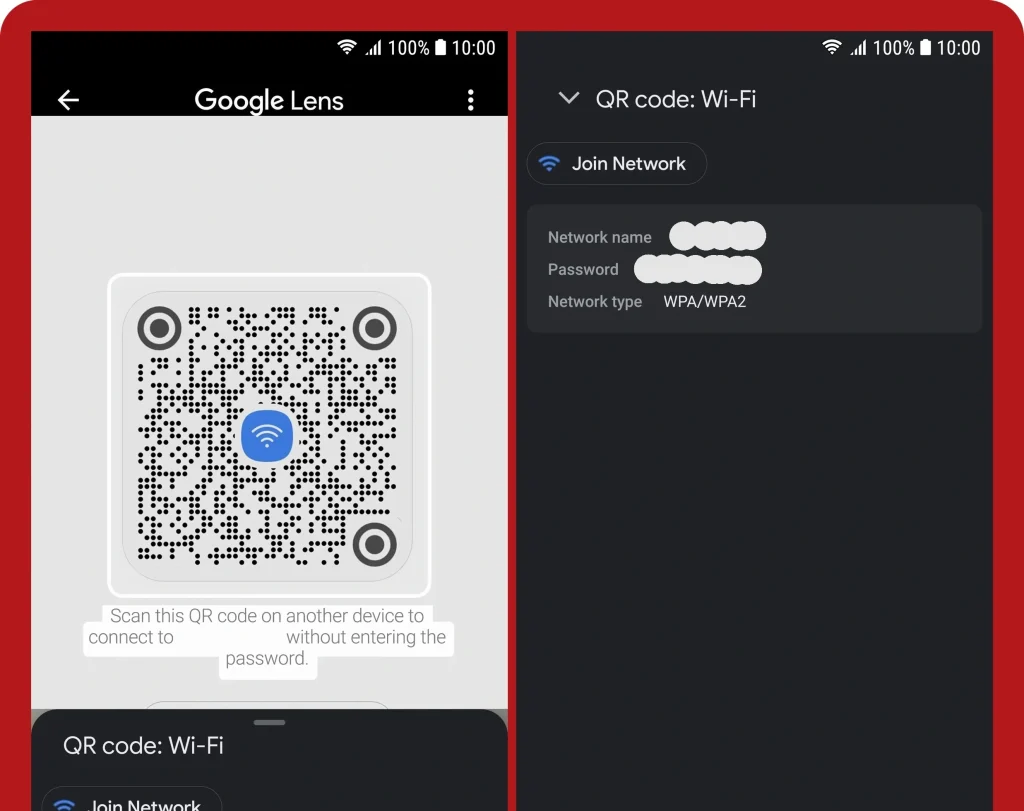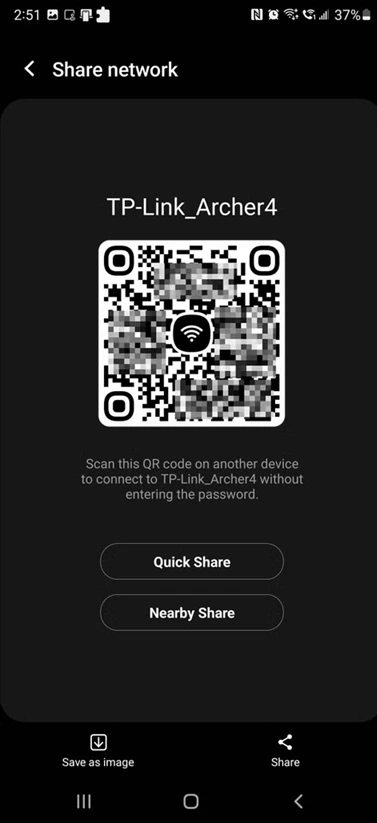How To Connect to a Wi Fi Using a QR Code: Latest Guide
Wi-Fi is now a basic part of our lives. We use it at home, in offices, schools, and public places. But typing long passwords every time you connect can be annoying. Sometimes you might even forget your Wi-Fi password. That is where QR codes come in handy.
With QR codes, you can connect to any wireless network quickly and without typing a single letter. You just scan the code, and your phone connects automatically. It is simple, safe, and fast. In this guide, you will learn how to connect to a Wi Fi using a QR code step by step, understand the right way to use it, and pick up helpful tips for beginners and advanced users.
Stay Secure Before You Scan: Important Precautions
Before you scan any QR code, you should take a few precautions. While this method is simple, scanning random codes can still put your device at risk. Always check the source and make sure the QR code is safe.
Here are some things to keep in mind before you connect to a Wi Fi using a QR code:
- Check the source: Only scan QR codes shared by people or organizations you trust. Fake codes can lead to harmful links or unsafe networks.
- Inspect the code physically: If you see a printed QR code in a public space, make sure it has not been covered by another sticker. Hackers sometimes paste fake code over real ones.
- Avoid public or unknown Wi-Fi: Do not connect to open networks through QR codes. These networks can be used to steal personal data.
- Turn off auto-connect: Disable auto-connect in your Wi-Fi settings. This stops your phone from connecting to unsafe networks automatically.
- Update your device: Make sure your phone or tablet has the latest software updates. This keeps your system safe while scanning QR codes.
- Use a built-in scanner if possible: Many phones have secure QR scanners built into the camera app. Use that instead of downloading random third-party apps.
- Keep antivirus active: A good security app helps protect your device from unsafe network connections.
- Don’t share your code publicly
If you create your own Wi-Fi QR code, share it only with trusted people. Posting it online can expose your network to strangers.
Taking these small steps can help you connect safely and confidently using QR codes.
How To Connect to a Wi-Fi Using a QR Code
QR codes make Wi-Fi connection easier than ever. Instead of typing a long password, you just scan the code, and the connection starts automatically. You can use this method on Android phones, iPhones, tablets, and even laptops with camera support.
It is best to use this method when:
- You want to share Wi-Fi quickly with friends or guests.
- You have a complex or long password that is hard to type.
- You are setting up multiple devices in one place.
- You want a contactless way to share Wi-Fi in public or business spaces.
Now, let’s look at four simple ways to connect to a Wi Fi using a QR code.
Method 1: Connect Using Your Smartphone’s Camera
If you have a newer smartphone, this is the easiest way to connect. Modern phones have a built-in QR reader in their camera app.
When you scan the code, the phone recognizes it as a Wi-Fi network and asks if you want to connect. No password typing, no confusion. Just scan and join.
This works best for phones running Android 10 and above or iOS 11 and above. It’s a great option for anyone who prefers quick and automatic methods.
When to use this method:
- When you want an instant connection.
- When your phone supports QR scanning in its camera.
- When you are helping someone connect to your network.
- When you want a clean, app-free experience.
Step 1: Open the camera app on your phone and point it at the QR code. Make sure the code fits clearly within the screen.

Step 2: Wait for a pop-up message that says “Join Wi-Fi Network.” Tap it to connect instantly.
That’s it. You have now connected your device without typing the password.
Method 2: Connect via Google Lens or QR Scanner App
Sometimes, the default camera may not recognize Wi-Fi QR codes. In that case, Google Lens or a QR scanning app can help.
Google Lens is built into many Android phones and can easily read network codes. You can also use trusted QR code reader apps available on the Play Store or App Store.
This method is ideal if you often scan various QR types or if your phone’s camera does not have built-in QR support.
When to use this method:
- When your camera app does not scan Wi-Fi codes.
- When you want detailed code information.
- When using older phones or tablets.
- When you prefer manual control of the scan.
Step 1: Open Google Lens or your QR scanner app and point it at the QR code.

Step 2: Once it detects the network, tap the “Connect” or “Join” option. The app will process the code and connect you to the Wi-Fi automatically.
This is a handy backup method that works on almost any smartphone model.
Method 3: Connect Through Android’s Built-In Wi-Fi QR Feature
Android devices have a feature to share or connect using QR codes directly in Wi-Fi settings. You can generate a code for your own network or scan one to join another.
This feature is secure because it is part of the Android system. It doesn’t require third-party apps and works smoothly on most Android devices from version 10 onward.
It’s also helpful when you want to share Wi-Fi with others but don’t want to reveal your password.
When to use this method:
- When you’re connecting Android to Android.
- When you want a fast, password-free share.
- When you prefer secure system features.
- When you host multiple devices or guests.
Step 1: Go to “Settings” and then “Network & Internet”. Select “Wi-Fi.” Tap your connected network and select “Share.” A QR code will appear.

Step 2: On the other phone, open Wi-Fi settings and tap “Scan QR code.” Point the camera at the code. It will connect automatically.
This method is fast, private, and very reliable.
Method 4: Connect Using a QR Code Generated on Your PC
You can also generate a Wi-Fi QR code on your computer. This is useful if you want to print it out or display it for others to scan.
Once you create the code, anyone can connect to your Wi-Fi just by scanning it with their device. It’s perfect for offices, cafes, or homes where guests often ask for the password.
This method gives full control because you create and manage the QR code yourself.
When to use this method:
- When you want to share Wi-Fi with many people.
- When setting up QR signs for visitors.
- When managing a workplace or business area.
- When you want a permanent code on display.
Step 1: Visit a trusted QR code generator site such as “qifi.org.” Enter your Wi-Fi name (SSID), password, and select the encryption type (usually WPA/WPA2).

Step 2: Click “Generate.” The site creates a QR code for your network. Download or print it. Others can now scan it to connect to your Wi-Fi easily.
It’s a practical and professional way to connect to a Wi Fi using a QR code in business or shared environments.
Smart Tips for Beginners and Advanced Users
Even though connecting with QR codes is easy, there are ways to make it even smoother and safer. These tips can help you get the best experience, whether you are a beginner or already familiar with QR features.
Here’s what to keep in mind:
- Keep codes visible but safe: If you use a printed QR code, place it where guests can see it, but not where strangers can misuse it.
- Use password protection: Even if QR codes hide your password, the code still contains that data. Always use strong encryption.
- Change your password sometimes: Update your Wi-Fi password every few months. It prevents unwanted access from older QR codes.
- Store the code securely: Save a digital copy of your QR code in a secure folder or password manager for later use.
- Label your codes: If you manage multiple Wi-Fi networks, label each QR code with the correct network name to avoid confusion.
- Test before sharing: Always scan your QR code with a second device to confirm it works before printing or sharing it.
- Avoid screenshots on shared devices
Screenshots can be copied or shared without permission. Use printouts or trusted QR sharing apps instead. - Use trusted generators: When creating code, use reputable sites or system tools. Avoid websites that ask for unnecessary permissions.
These points can save you time and protect your connection while helping others connect easily too.
Conclusion
Connecting to Wi-Fi through QR codes is one of the simplest ways to save time and avoid typing errors. It’s safe, smart, and works across different devices. Whether you’re using a phone camera, Google Lens, Android features, or a code made on your PC, you can join a network in just seconds.
As more people switch to contactless sharing, this method has become part of daily life. With basic safety steps and a clear understanding of how it works, anyone can learn to connect to a Wi Fi using a QR code smoothly. It saves effort and helps you stay connected wherever you go.
FAQs:
1. Can I use this method on any phone?
Yes, you can. Most smartphones made after 2017 have built-in QR scanners or camera support for it. Older phones can still connect with apps like Google Lens or a QR reader. This makes connect to a Wi Fi using a QR code almost universal across all devices.
2. Is it safe to connect using a QR code?
Mostly, yes. QR codes themselves are not dangerous, but fake ones can link to unsafe networks. Always scan codes only from trusted sources. This habit keeps your data secure while helping you connect to a Wi Fi using a QR code safely.
3. Can I make my own Wi-Fi QR code?
Yes, you can create one in less than a minute. Use reliable tools like qifi.org or Android’s built-in feature. It saves time for you and anyone connecting. Many homes and offices now display such codes because they help guests connect to a Wi Fi using a QR code instantly and without typing passwords.
Popular Post
Recent Post
How To Connect to a Wi Fi Using a QR Code: Latest Guide
Wi-Fi is now a basic part of our lives. We use it at home, in offices, schools, and public places. But typing long passwords every time you connect can be annoying. Sometimes you might even forget your Wi-Fi password. That is where QR codes come in handy. With QR codes, you can connect to any […]
How To Connect a Wireless Printer Easily to Windows 11/10 PC
Printing tasks are part of most home and office work today. Isn’t it? Well, yes! Using a wireless printer makes printing easier and faster because you don’t need cables. It allows you to print documents and images from any corner of your room as long as your device and printer are connected to the same […]
How To Connect Your Windows 11 PC to a Projector or Another PC
A bigger screen can help you share your work with others. When you connect your Windows 11 PC to a projector, your screen becomes easier to view in a meeting room, classroom, or home. You can show slides, videos, notes, or entertainment. Most people do this for work or study, but it is also helpful […]
How To Set Up Dual Monitors Easily Windows 11/10: Complete Guide
Working with one screen can feel limiting. You switch between apps constantly. Your workflow slows down. A dual monitor setup changes everything. It gives you more space to work. You can see multiple things at once. This guide shows you how to set up dual monitors easily on Windows systems support. Windows 11 and Windows […]
How to Set Your Preferred Default Printer On Windows 11/10: Complete Guide
Printing documents should be simple. But many users struggle with their printer settings. Windows often picks the wrong printer as the default. This creates delays and wastes paper. Setting up your preferred printer as the default saves time. It prevents printing errors. This guide shows you how to set your preferred default printer Windows systems […]
Ashampoo WinOptimizer Review: Can It Really Speed Up Your PC?
Is your computer running slowly? Do programs take forever to load? You’re not alone. Millions of PC users face this problem daily. Ashampoo WinOptimizer claims it can fix these issues. This software promises to clean junk files, boost speed, and make your computer run like new. But does it really work? Or is it just […]
Screen Mirroring | Screen Cast Phone to Laptop Windows 11
screencast phone to laptopScreen mirroring is a great way to show your phone’s screen on a laptop. Right? Whatever you see on your phone, videos, games, apps, it shows up on the bigger screen too. It’s great for watching with friends, sharing ideas, or just getting a better view. Lots of people think it’s hard […]
Avast Cleanup PC Cleaner and Optimizer: Everything You Need to Know
Your computer gets slower over time. This is normal but frustrating. Files pile up. Programs start automatically. Your PC takes forever to boot up. You need a solution that works. Something simple but effective. Avast Cleanup promises to fix these issues. But does it really work? This guide covers everything about Avast Cleanup. You’ll learn […]
How to Recover Permanently Deleted Files in Windows 10/8/7
Losing important files can feel like a disaster. Well, yes! Maybe you deleted something by accident. Maybe you emptied the Recycle Bin a little too quickly. Suddenly, that crucial document or cherished photo seems lost forever. But take a deep breath. Windows 10 (and even 8 or 7) offers powerful ways to recover permanently deleted […]
Iolo System Mechanic: Full Review & Performance Breakdown
A fast computer is vital today. Slow systems waste time and hurt productivity. Common reasons include too many startup apps, junk files, and broken settings. There are many tools that claim to fix these issues. Some are light cleaners. Others act as full optimization suites. Iolo System Mechanic belongs in the second group. It is […]


























